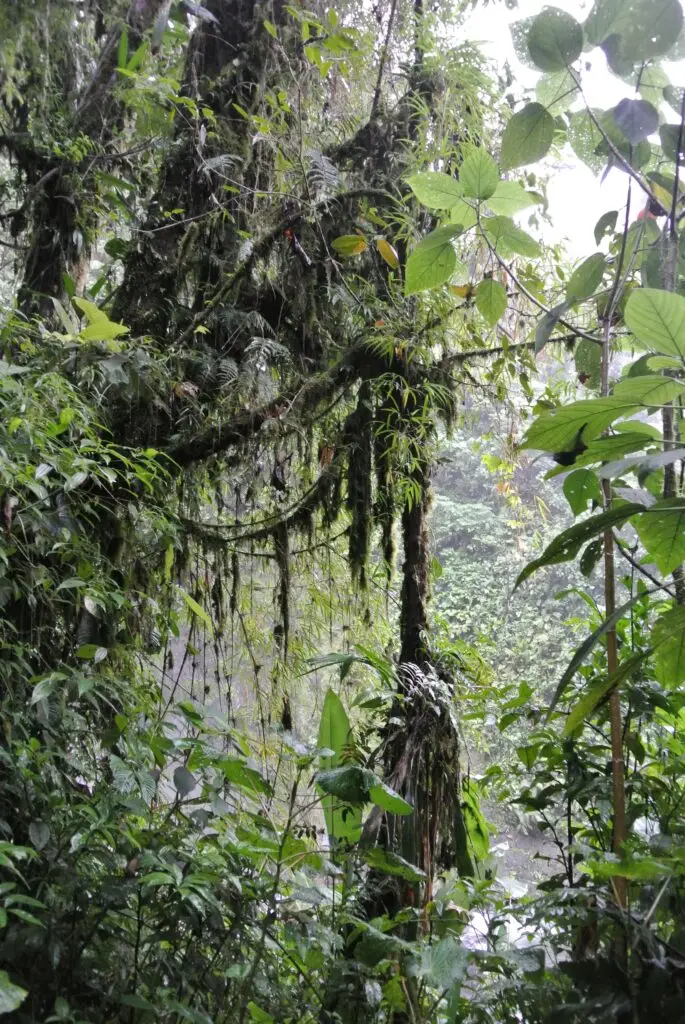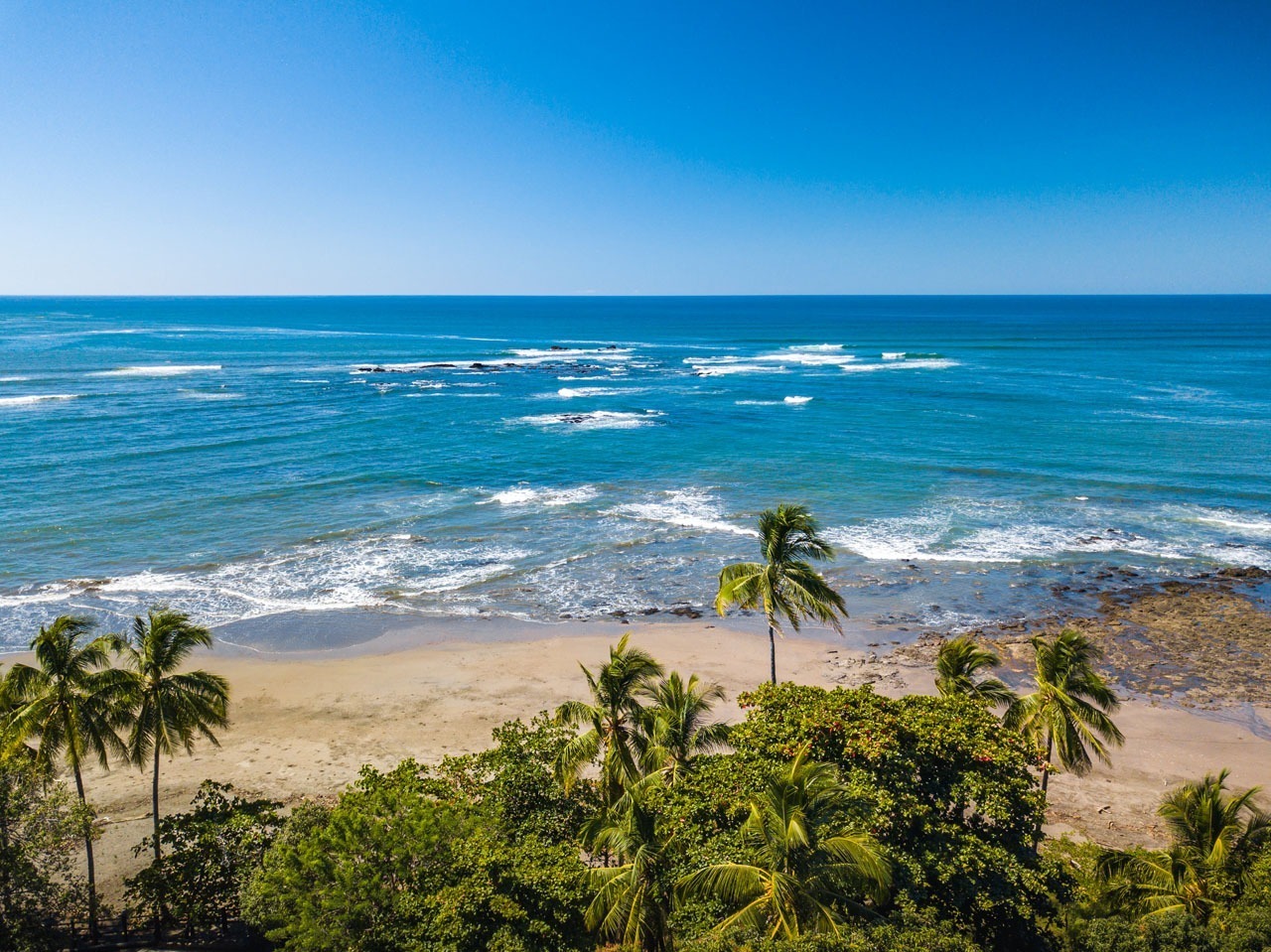Planning a trip to Costa Rica? Understanding the country’s weather by month is crucial for making the most of your experience. Costa Rica boasts a diverse climate, ranging from tropical rainforests to arid plains. Knowing when to expect rain or shine can help you pack appropriately, decide on the best time to travel, and choose activities that won’t be hampered by unpredictable weather.
From the dry season that spans December to April to the wetter months starting in May, each period offers unique opportunities. For instance, visiting during the dry season means you’ll enjoy more sunshine, ideal for beach trips and outdoor excursions. Conversely, the rainy season is perfect for exploring lush rainforests and experiencing fewer crowds.
Whether you’re traveling by car or on foot, being prepared for Costa Rica’s varied climate will ensure a smoother, more enjoyable journey. We’ll walk you through the essential weather patterns month-by-month, so you can plan your adventure with confidence and make the most of your time in this beautiful country.
Overview of Costa Rica's Climate Zones
Costa Rica’s climate is as diverse as its landscape. From tropical rainforests to high mountain ranges, each region offers a unique climate experience. Understanding these climate zones can help you prepare for your trip and make the most of your visit.
Tropical Rainforest Climate

Costa Rica’s tropical rainforest climate is primarily found along the Caribbean coast. Here, you can expect high humidity and significant rainfall throughout the year. This area is lush and green, thanks to the constant supply of rain.
Regions like Corcovado National Park and Tortuguero National Park are perfect examples of this climate zone. These areas are home to a vast array of wildlife, including howler monkeys, sloths, and colorful birds. With rainfall often exceeding 200 inches per year, it’s one of the wettest regions in the country. For more detailed information, check out the Costa Rica Rainforests or Costa Rica Tropical Rainforest.
Tropical Savanna Climate and Guanacaste Costa Rica Weather
In contrast to the rainforests, the Guanacaste region experiences a tropical savanna climate. This area is characterized by a distinct dry season and a shorter, less intense wet season. From December to April, you can expect minimal rainfall, making it the driest part of Costa Rica.
This climate is ideal for travelers looking to enjoy sunny beach days and explore the dry tropical forests. Liberia, the gateway to the region, often sees temperatures soaring, making it perfect for sunbathing and water sports. Although the wet season from May to November brings some rain, it’s usually less intense compared to other parts of the country. For more about this region, visit Guanacaste Costa Rica Weather.
Mountain Climate
Costa Rica’s mountains, particularly in the Central Valley, offer a unique climate compared to the lowland areas. The higher altitudes mean cooler temperatures, especially in the evenings. During the day, temperatures are comfortable and warm, but they can drop significantly at night.
Areas like Monteverde and the Talamanca Range are renowned for their cloud forests. These regions receive a lot of mist and light rain, making them lush and green year-round. The cooler climate is perfect for hiking and exploring the rich biodiversity. More detailed information on this can be found at Costa Rican Mountain Climate.
Costa Rica Weather San Jose

San Jose, the capital of Costa Rica, has a unique climate due to its location in the Central Valley. This city enjoys a mild climate year-round, with temperatures usually ranging between 60°F and 79°F (15°C and 26°C).
San Jose experiences two distinct seasons: the dry season (December to April) and the rainy season (May to November). During the dry season, the weather is generally sunny and pleasant. However, the rainy season brings afternoon showers, which can be quite heavy but are usually short-lived. For current weather updates, you can visit San Jose Weather Forecast.
Costa Rica’s varied climate zones offer something for everyone, whether you’re seeking a sunny beach vacation or an adventure in the rainforests and mountains.
Photo by César Badilla Miranda on Unsplash
Weather Patterns by Month
Costa Rica’s weather changes dramatically from month to month, affecting travel plans and activities. This section will help you navigate the weather patterns of each month, so you can plan your trip accordingly.
Costa Rica Weather by Month January: Highlight Dry Season Conditions, Popular Travel Destinations, and Activities
January marks the height of the dry season in Costa Rica. With mostly sunny days and little to no rain, it’s an ideal time for outdoor activities. Popular destinations include the beaches of Guanacaste and Nicoya Peninsula, where tourists can enjoy perfect beach weather with temperatures ranging from 75°F to 90°F. Activities like surfing, zip-lining, and wildlife tours flourish during this month.
Costa Rica Weather by Month February: Detail the Continuation of the Dry Season, Average Temperatures, and Events
February continues the dry season, featuring warm temperatures and virtually no rain. Average temperatures range from 86°F to 94°F in the lowlands and coastal areas. This month is a great time to visit the Central Valley and Arenal regions, where the climate is pleasantly warm with less humidity. Events like the Palmares Festival, one of Costa Rica’s largest parties, happen in this month, drawing crowds for concerts, bullfights, and parades. For more details, visit this helpful guide for spending February in Costa Rica.
March: Discuss the End of the Dry Season in Some Regions and the Transition in Weather Patterns
March signals the end of the dry season in some parts of Costa Rica, especially on the Caribbean side. Coastal regions remain hot, with temperatures soaring between 86°F to 96°F. The Central Valley and Nicoya Peninsula remain relatively dry, making it a perfect time for a beach vacation. As the weather warms, this is also a great month for hiking and exploring national parks. Discover what to expect visiting Costa Rica in March.
Costa Rica Weather by Month April: Explain the Transition to the Rainy Season, Typical Weather Conditions, and Travel Tips
April heralds the beginning of the transition from the dry season to the rainy season. You’ll still find plenty of sunshine, but occasional afternoon showers start to appear, especially towards the end of the month. Temperatures remain high, usually between 85°F and 95°F. If you’re visiting during this month, packing light rain gear and planning early morning activities can help you make the most of your trip. Learn more about Costa Rica weather in April here.
May: Describe the Onset of the Rainy Season, Its Impact on Travel, and What to Expect
May signals the onset of the rainy season in most parts of Costa Rica. Rain showers become more frequent, usually occurring in the late afternoon or evening. Temperatures dip slightly, averaging between 70°F and 85°F. While the rain can impact some outdoor activities, it also brings lush landscapes and fewer tourists. This makes it an ideal time for a peaceful, picturesque visit to rainforests and national parks. For more information, check out this complete guide for May in Costa Rica.
Costa Rica Weather by Month June: Detail Rainy Season Characteristics, Temperature Ranges, and Recommended Activities
June is well within the rainy season, with regular afternoon showers that can sometimes be heavy. Despite the rain, the mornings usually remain sunny, allowing for outdoor activities like bird watching and hiking. Temperatures range from 77°F to 85°F. Visiting the cloud forests of Monteverde or the lush landscapes of the Osa Peninsula are great choices during this period.
Costa Rica Weather by Month July: Highlight the 'Little Summer' Phenomenon, Weather Conditions, and Travel Advice
July experiences a brief respite in the rainy season known as “Veranillo” or “little summer.” This phenomenon brings about a short period of drier weather, particularly in the Pacific coast areas. During this time, temperatures remain warm, ranging from 80°F to 88°F. This is an excellent month for visiting national parks or heading to the beaches for some surfing and swimming. For more details on this unique weather pattern, you can read about July weather in Costa Rica.
Costa Rica Weather by Month August: Discuss the Intensity of the Rainy Season, Areas to Visit, and Weather Preparation Tips
August marks a return to more intense rainy season patterns, especially in the afternoons. The Pacific coast can see heavy rains, while the Caribbean coast sometimes enjoys better weather. Temperatures are typically in the high 70s to mid-80s. It’s a fantastic time for visiting the Caribbean side or exploring the biodiversity of Corcovado National Park. Remember to bring waterproof gear and plan morning activities to avoid the afternoon rains. You can check more detailed weather tips for August in Costa Rica.
Costa Rica Weather by Month September: Explain the Peak of the Rainy Season, Its Effects on Travel, and Safety Considerations
September is often the peak of the rainy season, with frequent downpours and occasional storms. This can lead to travel disruptions, particularly in remote areas. However, the rain also brings vibrant greenery and flourishing wildlife. Exploring the cloud forests and visiting hot springs can be delightful at this time. Ensure you have sturdy rain gear and flexible travel plans to adapt to the weather.
Costa Rica Weather by Month October: Describe Weather Patterns, Potential Travel Disruptions, and Seasonal Activities
October remains deeply entrenched in the rainy season, boasting the highest rainfall of the year. Many Pacific coast areas are particularly wet, but the Caribbean coast tends to be drier. This month might not be ideal for beach holidays, but it can be fantastic for those wanting to see lush, rain-soaked landscapes. Be prepared for potential travel disruptions and have alternative plans in place. For more details, check traveling to Costa Rica in October.
Costa Rica Weather by Month November: Discuss the Transition to the Dry Season, Improving Weather Conditions, and Travel Opportunities
November begins the slow transition back to the dry season, with rainfall decreasing steadily. Temperatures remain warm, hovering between 75°F to 85°F. This transitional phase offers beautiful scenery with blooming flora and fewer tourists, making it a good time for both beach and jungle excursions. The Costa Rica weather in November provides a good balance of sun and occasional showers.
Costa Rica Weather by Month December: Highlight the Dry Season's Return, Holiday Travel Tips, and Popular Destinations
December marks the official start of the dry season, bringing back sunny days and warm temperatures. It’s a popular month for holiday travel, so expect more tourists and higher prices. The beaches of Guanacaste and the Nicoya Peninsula become prime destinations again. With temperatures ranging from 70°F to 85°F, it’s perfect for swimming, sunbathing, and festive celebrations. Plan ahead to secure accommodations and activities during this busy month. If you’re considering a visit, get more insights on returning dry season weather in December.
Best Time to Visit Costa Rica and Guanacaste
Costa Rica is a year-round destination, but the best time to visit largely depends on what you want to do and see. Each season offers different experiences, weather patterns, and opportunities for adventure. This section will guide you through the optimal months to plan your trip to Costa Rica and the Guanacaste region.
Dry Season (December to April)
The dry season, also known as the “high season,” is from December to April. This is when Costa Rica experiences its most pleasant weather, with plenty of sunshine and minimal rainfall. It’s the perfect time for beach vacations, outdoor activities, and sightseeing.

Why Visit During the Dry Season?
- Beaches and Water Activities: The Pacific Coast, particularly Guanacaste, boasts warm, sunny days perfect for swimming, surfing, and sunbathing.
- Wildlife Viewing: The dry season aligns with the migration patterns of various animals, making it an excellent time for wildlife tours in places like Manuel Antonio National Park.
- Festivals and Events: December kicks off the holiday season, filled with local festivals, parades, and celebrations.
For more detailed information on the best time to visit, see Best Time to Visit Costa Rica.
Green Season (May to November)
The green season, from May to November, brings more rainfall but also fewer tourists and lush, green landscapes. The rain typically falls in the afternoon, leaving the mornings bright and clear.
Advantages of Visiting During the Green Season
- Lower Prices: Hotels, tours, and flights are often less expensive during this season, making it ideal for budget-conscious travelers.
- Lush Scenery: The rain revives the flora, making the rainforests and national parks vibrant and verdant.
- Less Crowded: Popular tourist destinations are less crowded, giving you a more intimate experience.
For those interested in exploring during the green season, the Best Time to Visit Guanacaste offers more insights.
Special Considerations for Guanacaste
The Guanacaste region, located on the Pacific coast, is known for its distinct dry and wet seasons. The dry season here offers virtually no rainfall, making it the prime time for beach activities, exploring dry forests, and enjoying outdoor adventures.
Best Months to Visit Guanacaste
- January to March: These months offer the most predictable weather, with nonstop sunshine, perfect for beach trips and outdoor excursions.
- July: Known as “little summer,” July provides a break from the rainy season, offering a short spell of dry weather.
Check out What Is The Best Month To Visit Guanacaste Costa Rica? for more details on the optimal times to visit this region.
Whether you prefer the sunny, dry season or the lush, green season, Costa Rica and Guanacaste have something to offer every traveler. Plan your trip according to your interests, and you’re sure to have an unforgettable experience.
Tips for Planning Your Trip
Planning your trip to Costa Rica requires some careful consideration, especially given the country’s diverse weather patterns. From packing the right items to understanding travel safety in the rainy season, here’s a comprehensive guide to ensure your adventure goes smoothly.
Packing Essentials
Packing for Costa Rica can be a bit tricky due to the varying weather conditions. Whether you’re visiting during the wet or dry season, here’s a handy checklist to help you get started:
- Lightweight, quick-dry clothing
- Waterproof jacket or poncho
- Sturdy hiking shoes and water sandals
- Swimsuit and beachwear
- Sunscreen and insect repellent
- Reusable water bottle
- Flashlight or headlamp
- Waterproof bags for electronics
- Hat and sunglasses
- Small first aid kit
For a detailed packing guide, check out The Complete Packing List for Costa Rica.
Travel Safety
Costa Rica is generally safe, but it’s essential to stay vigilant, particularly during the rainy season. Here are some key travel safety tips:
- Weather Awareness: Always check local weather forecasts. Heavy rains can cause landslides and flooding in certain areas.
- Safe Driving: Roads can become slippery and hazardous during rain. Ensure your vehicle is in good condition and drive cautiously.
- Emergency Kit: Carry an emergency kit that includes essential medicines, a flashlight, batteries, and a whistle.
- Authorized Tours: Use authorized travel agencies and guides who are familiar with the local conditions.
Local Festivals and Events
Costa Rica boasts vibrant festivals and events throughout the year, many of which are influenced by the weather. Here are some significant events to consider:
- Palmares Festival (January): Known for its concerts, bullfights, and parades. Held during the dry season, which offers pleasant weather for festivities.
- Limon Carnival (October): A lively celebration on the Caribbean coast with parades, music, and dancing. Despite being in the rainy season, it’s a spectacle not to be missed.
- Independence Day (September 15th): Celebrating Costa Rica’s independence with parades, traditional music, and cultural performances. It often coincides with the peak of the rainy season, so plan accordingly.
For a full list of festivals and events, check out Events and Festivals in Costa Rica.
Understanding and preparing for Costa Rica’s weather by month can make your trip more enjoyable. These tips will help you navigate the varying climate, stay safe, and immerse yourself in the local culture. Happy travels!
Conclusion
Understanding Costa Rica’s weather by month is paramount for optimizing your travel experience. By familiarizing yourself with the country’s diverse climate zones and seasonal weather patterns, you can plan your trip more effectively. Whether you seek sunshine for beach days or the lush greenery of the rainy season for rainforest explorations, this knowledge will allow you to tailor your itinerary to your specific interests. Proper preparation ensures a safer, more enjoyable journey, enabling you to fully appreciate the natural beauty and cultural richness that Costa Rica has to offer.
